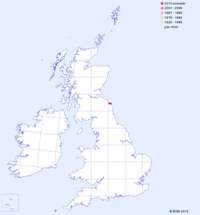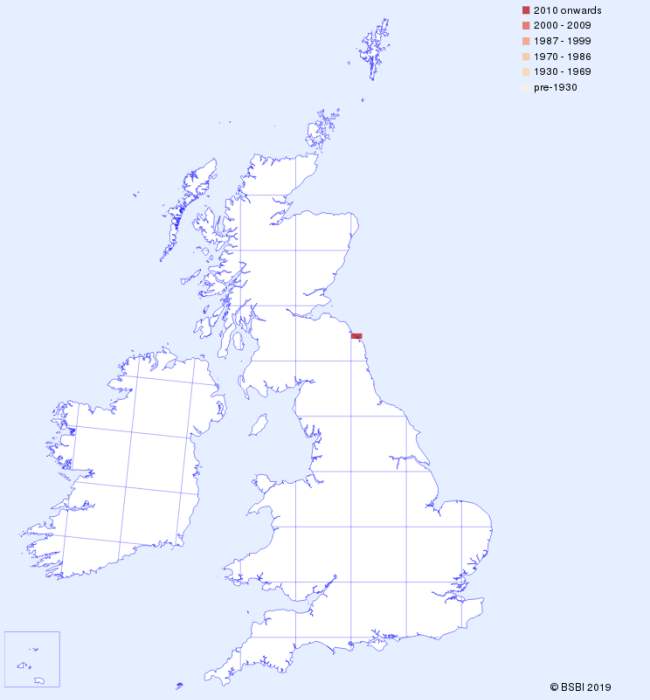The taxonomy of this orchid has been fraught with confusion. Originally known to us as Epipactis dunensis, this orchid was then reclassified as as a variety of the Narrow-lipped Helleborine - Epipactis leptochila var dunensis. It was further reclassified as Epipactis pietzi var. sancta, and then in 2002 genetic studies carried out by Squirrell et al finally confirmed that the Lindisfarne plants are sufficiently different to set them apart from other similar-looking species, and so they were renamed as Epipactis sancta and recognised as a British endemic orchid. As its name suggests, this is a plant that grows in a holy place. Lindisfarne, also known as Holy Island, is a small island situated off the north-east coast of England, south of Berwick-upon-Tweed, and it is best known for its medieval religious heritage. It is to the western part of the island, the so-called Snook, that those who wish to see the Lindisfarne Helleborine should make their way. These orchids can only be found on the western tip of Holy Island, where they grow in the dune slacks among creeping willow and marram grass, or sometimes in bare sand. Epipactis sancta flowers between late June and mid July. Because this orchid is self-pollinating, its flowering season is short. It is classified as Endangered under the Wildlife and Countryside Act.
| Distribution Map | Key Features | |
 |
Records for the Lindisfarne Helleborine from BSBI are shown on the map with most recent in front. (Hover the mouse over the small map to expand it.) |
Plant: 15 to 30cm tall. Stem yellowish green; hairy towards the top. |
Image Gallery for Lindisfarne Helleborine Epipactis sancta
| Pollination | Taxonomy & Hybrids |
The Lindisfarne Helleborine is self-pollinated. |
The specific name sancta means 'sacred'. Subspecies: none. |
Articles about Lindisfarne Helleborine in JHOS
